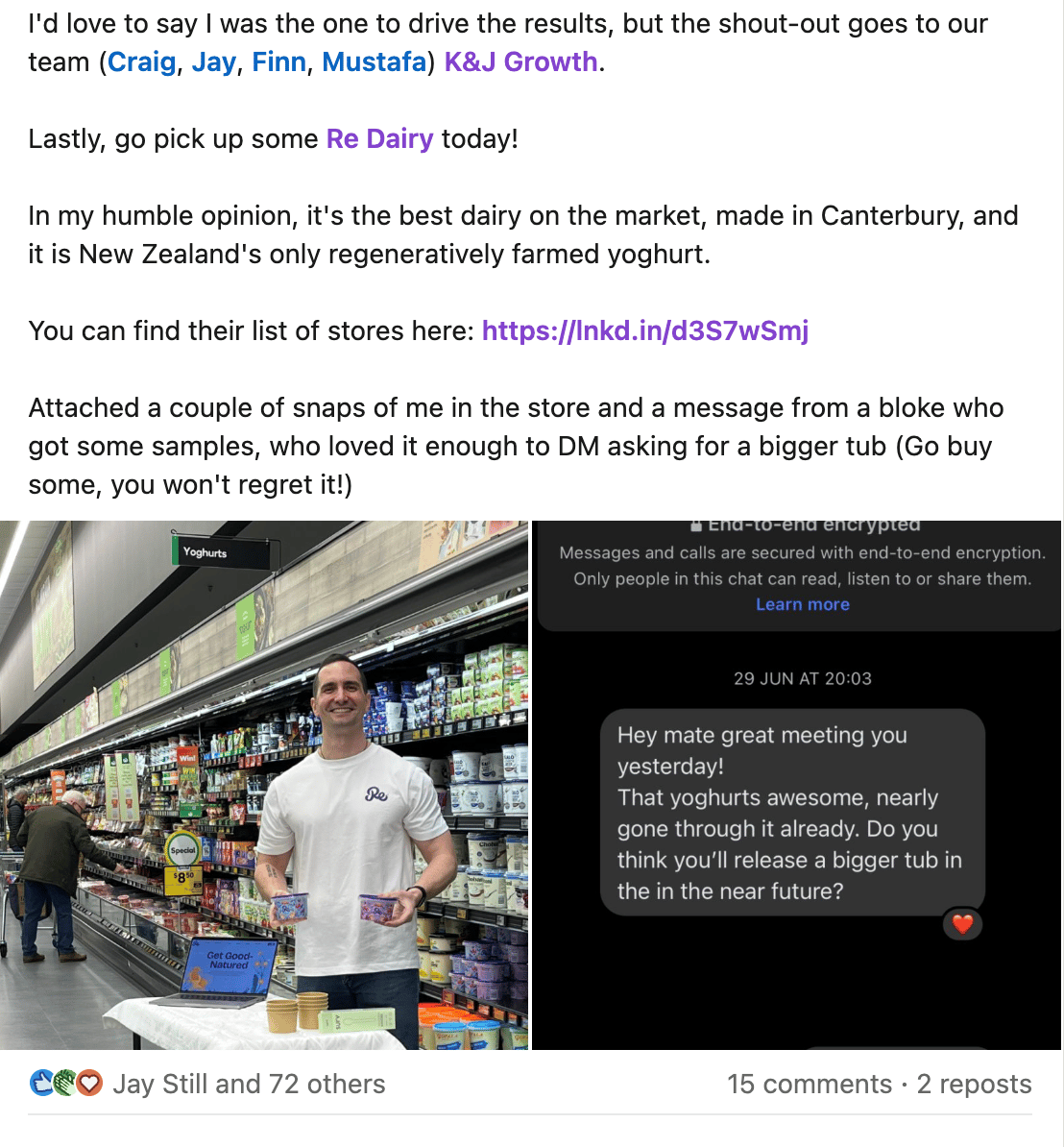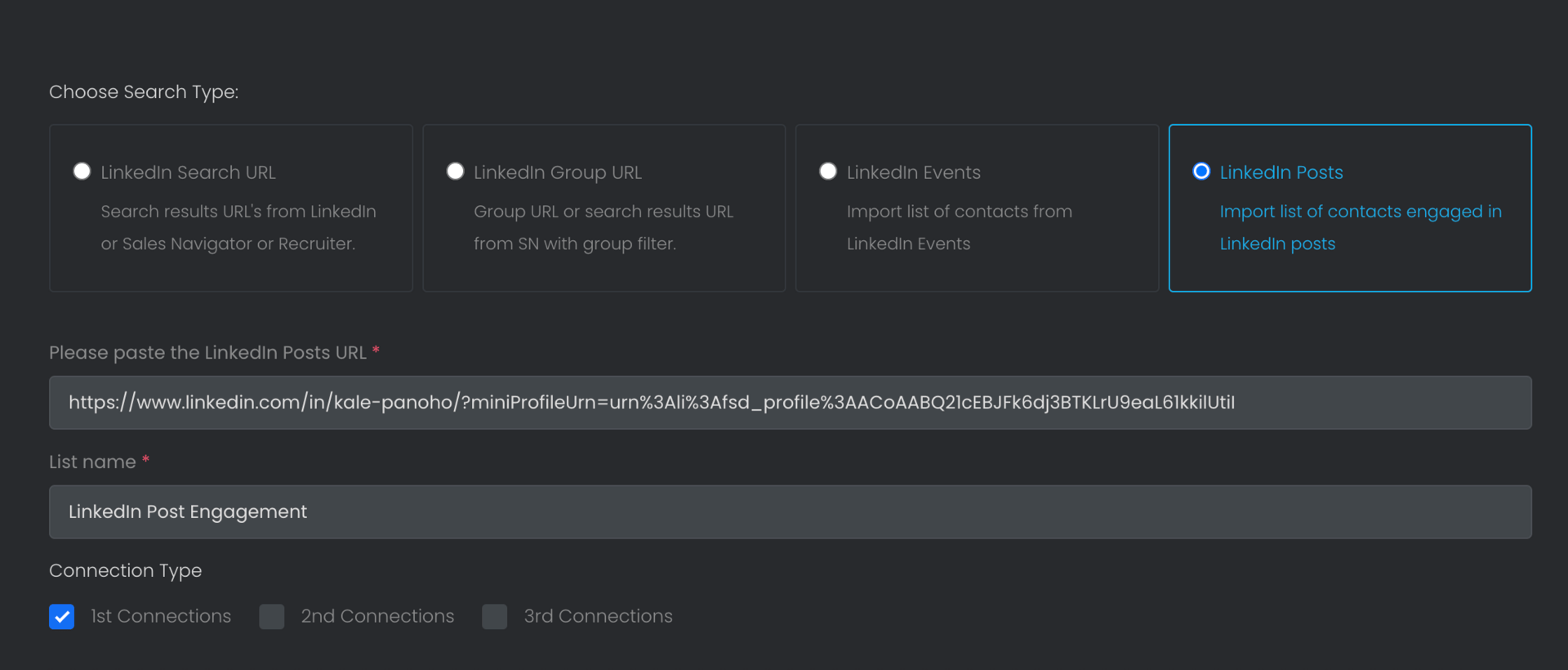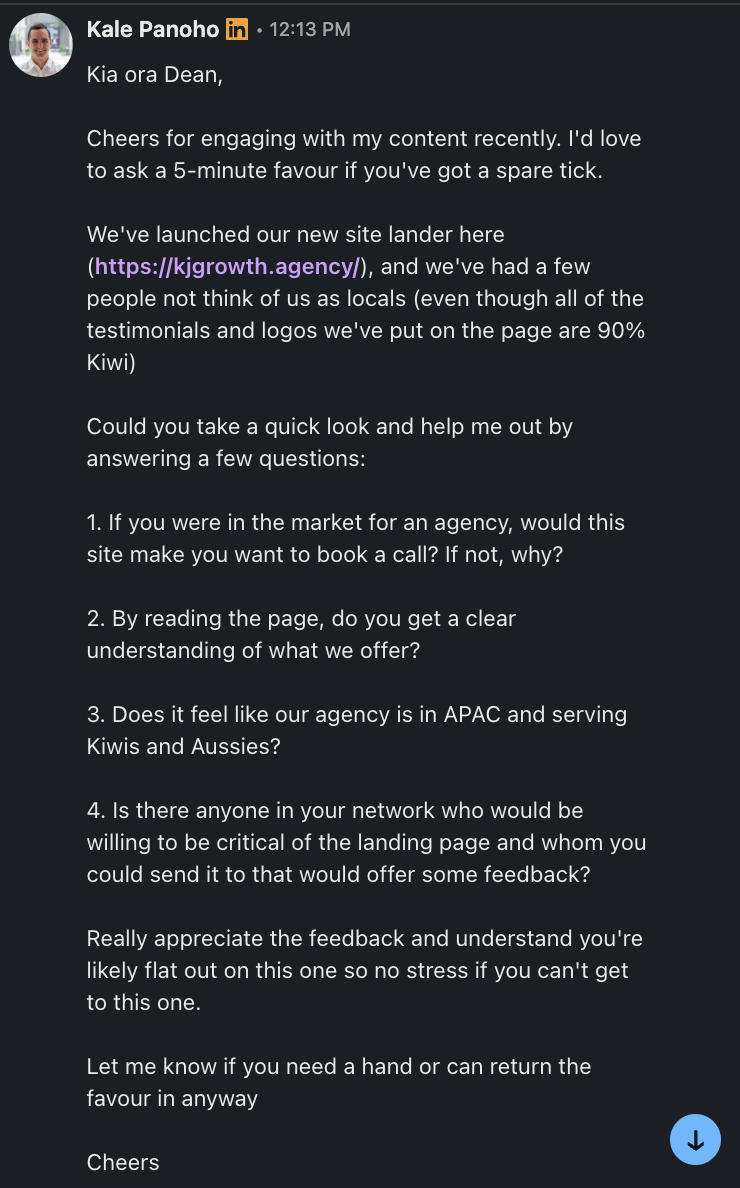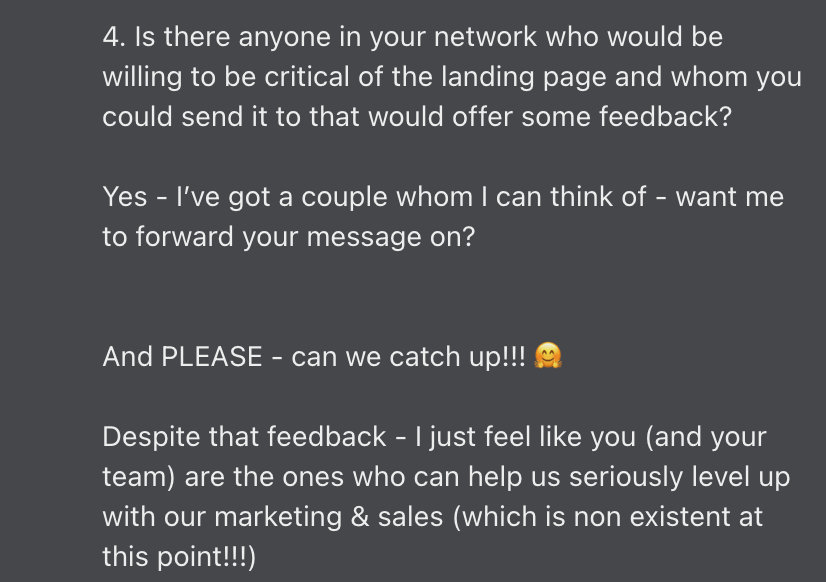- The Method
- Posts
- ⚙️ Turn Your LinkedIn Post Into Automated Lead Generation
⚙️ Turn Your LinkedIn Post Into Automated Lead Generation
+ avoiding type 1 erros

Turning Your LinkedIn Posts Into Leads
Two weeks ago, I posted on LinkedIn about launching our client, ReDairy, into supermarkets across New Zealand.

Snippet from my LinkedIn Post
I wanted to leverage the engagement on this post as a lead generator, driving people to our home page and gathering feedback on our redesign.
Here’s how I automated the entire process and generated five new leads in less than 10 minutes.
Go to We-Connect
Follow the sign-up process and you’ll land on the home dashboard
You’ll need to connect your LinkedIn profile, go to:
> Settings
> Select “LinkedIn Accounts”
> Select “Add new”
> Follow the rest of the connection process based on your LinkedIn profile settings
> If this process is buggy, reconnect again and refreshOnce your LinkedIn account is connected, select “Campaigns”

LinkedIn Campaign Capture
Now set up your campaign:
> Select “+ Add New”
> Select “Smart Sequence”
> Select “LinkedIn Posts”
> Select a recent LinkedIn post and grab the URL and paste it into the box, and name it as a “LinkedIn Post Engagement ”
Campaign Set Up
> Select 1st connections (This is just people who you are already connected to) or select 2nd connections to send this to people who aren’t linked to you
> Select “Continue”
> Select “Message Connections”
> Fill in the message details - here is what I sent:
Outbound message based on people who engaged with my posts
Finalise the campaign details:
> Select 10 daily action limits & randomise daily actions
> Select “Continue”
> Select “Launch”
Here are the results so far:

Screenshot from the campaign
11 people have replied
4 of those people have turned into leads

Cheers Amy 😉
P.S.: If you’re new to LinkedIn automation tools like We-Connect, make sure these things are in place before you launch:
Make sure you have at least 100 connections on LinkedIn
You’ve been posting regularly for at least 4 weeks
Your account is at least 3 months old
All of the above can be done on a free trial of the software and a free trial of LinkedIn Premium.
P.P.S: To readers of the newsletter who received this message - thank you for the feedback and replies, which have helped us redesign the page for a Kiwi & Aussie audience.
Errors
In a head nod to the late, great Daniel Kahneman, I'm going to call these Type 1 and Type 2 errors.
As I see it, these are two of the biggest reasons many businesses stay in "self-employed" mode - trapped in a job, unable to earn more than they could working for someone else.
I hired a trainer for Compound eight weeks ago.
Week 1: Cost $560, revenue $0
Week 2: Cost $580, revenue $225
Week 3: Cost $594, revenue $375.
Week 8: Cost $640, revenue $1,255.
At full capacity, this trainer will bring in $2,200 per week and contribute around $1,000 in weekly profit to our gym.
The more trainers we hire like this, the more profitable we become. This scales.
Compare that to a group fitness program we used to run called Tribe. At its peak, Tribe had 120 members, six coaches, and a 40 session per week timetable. It generated $175,000 in revenue before GST, but it cost $120,000 to run.. And that’s not counting admin & management time.
Worse: it made the same profit when we had two coaches delivering 12 sessions a week as it did with six coaches and 40 sessions. More effort, same result.
A Type 1 error is not taking the leap. Never hiring that trainer. Being too cautious to absorb a few weeks or months of loss in order to build something that eventually earns multiples more than you ever could on your own.
A Type 2 error is taking that leap with no path to profitability. More staff, timetable sessions and else. You grow, but don’t win.
I’ve made both errors and they lead to the same outcome: a business owner with a ceiling on their earnings and no asset being built.
Stuck earning like an employee, but with all the problems of a business owner.